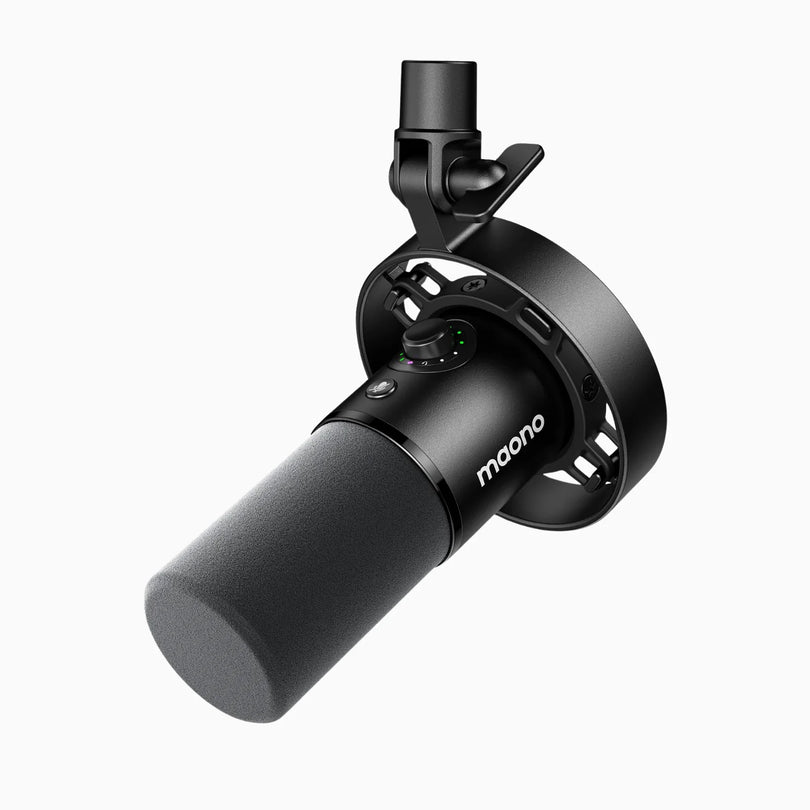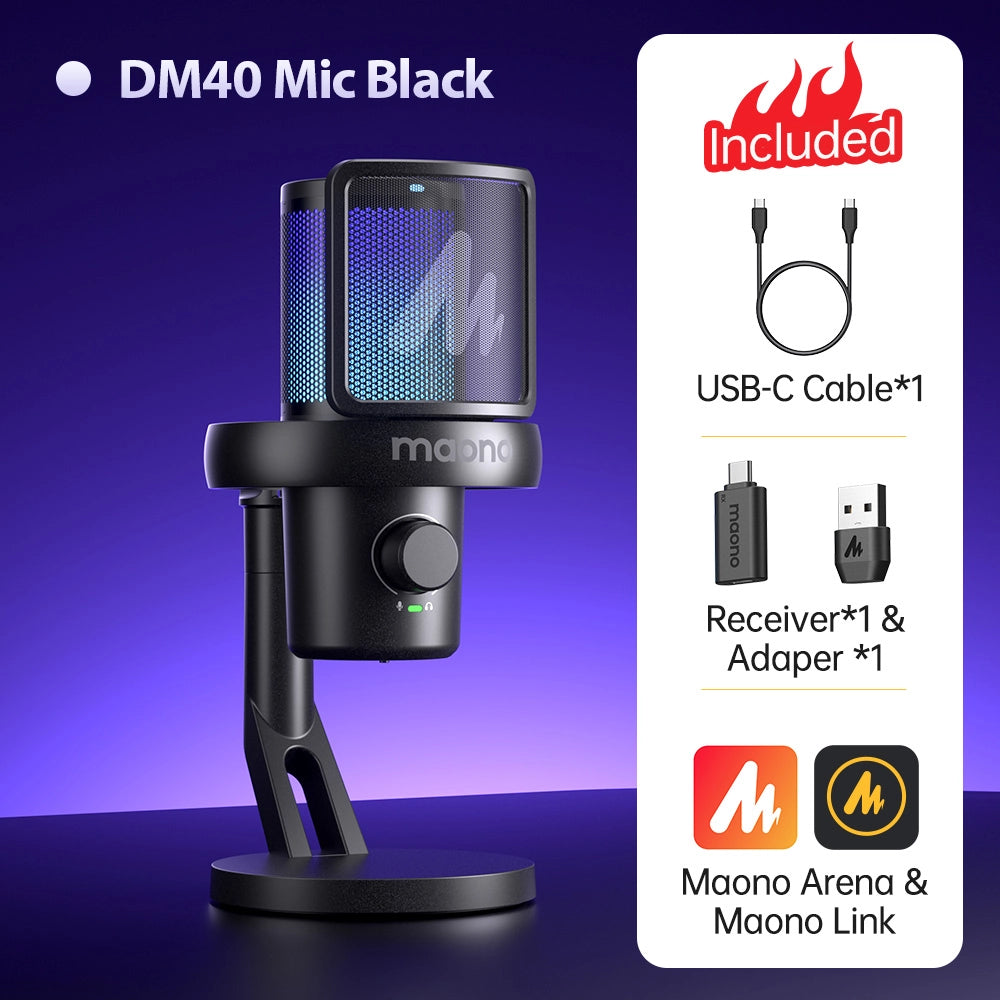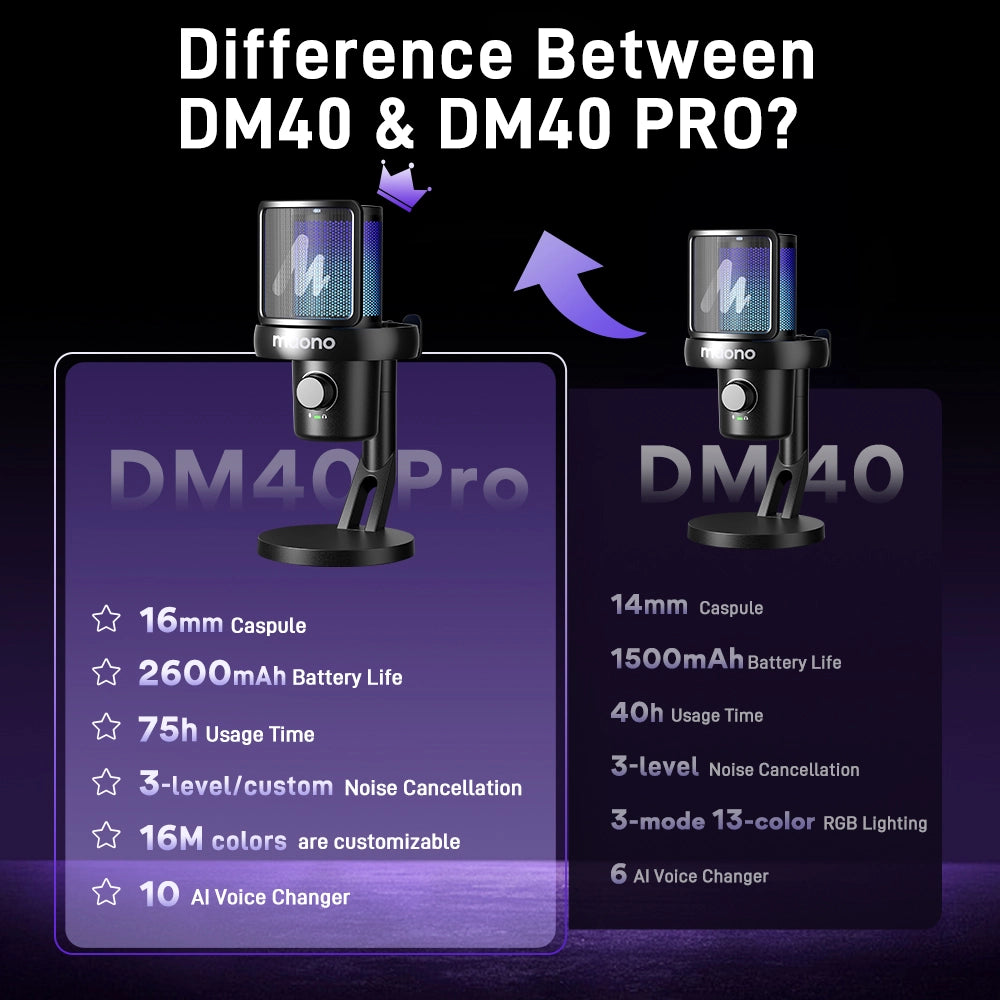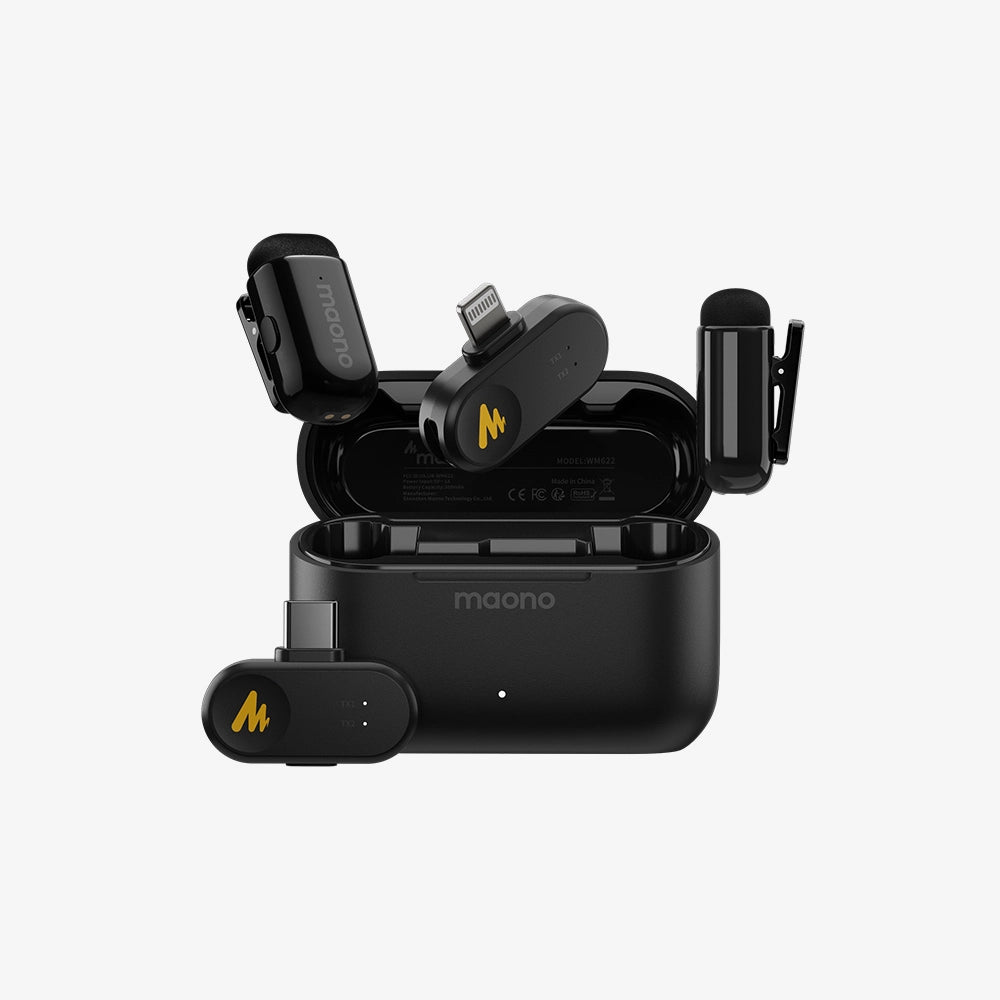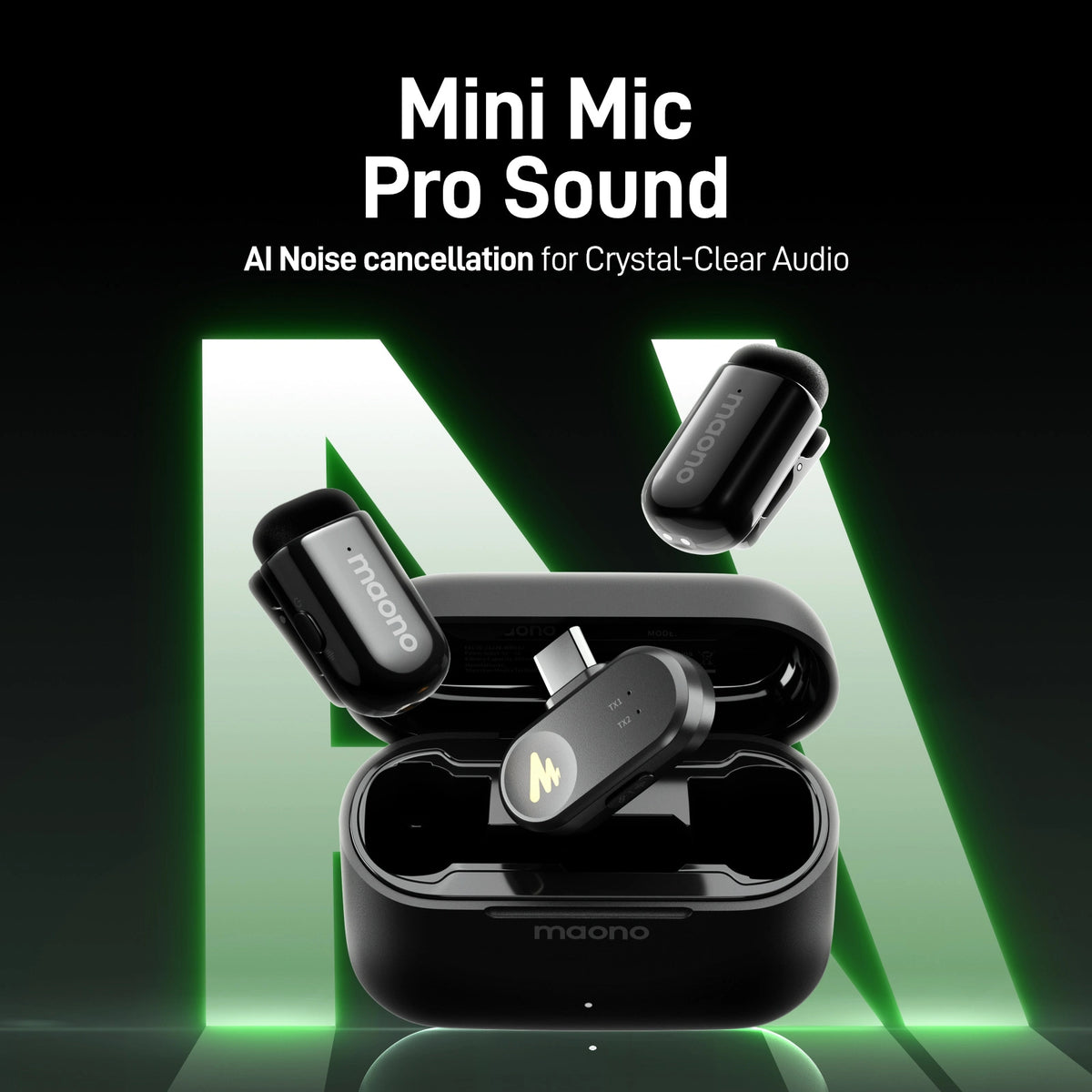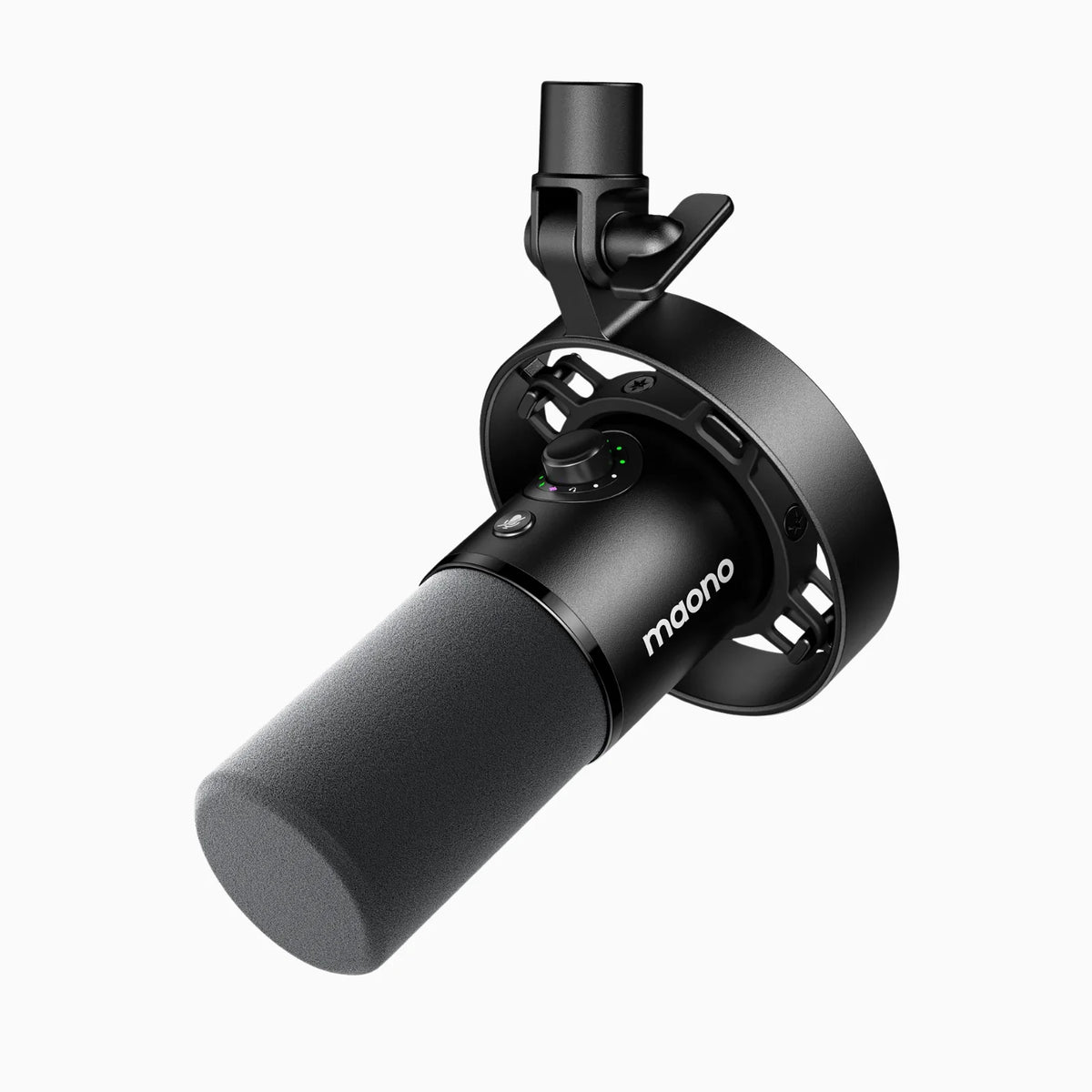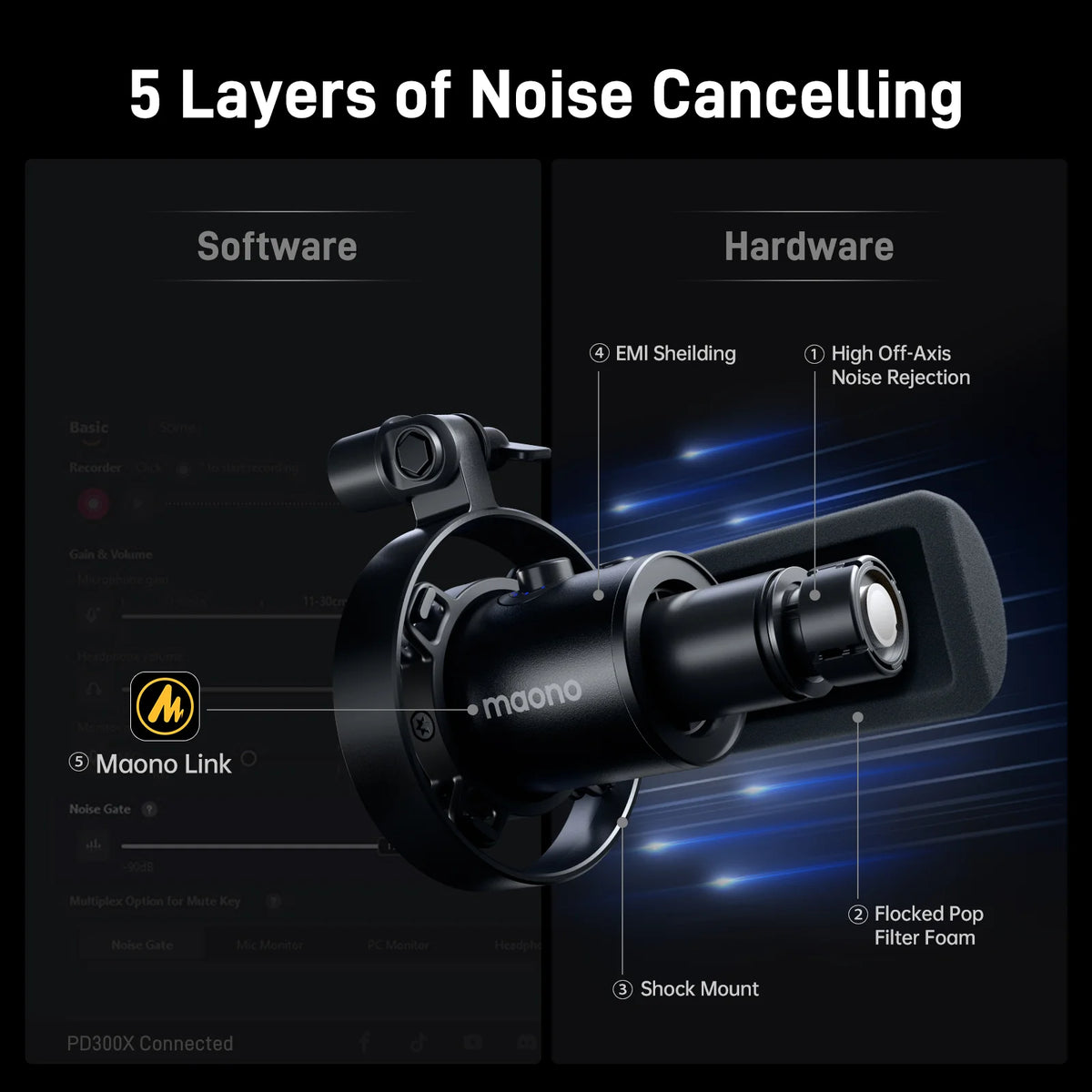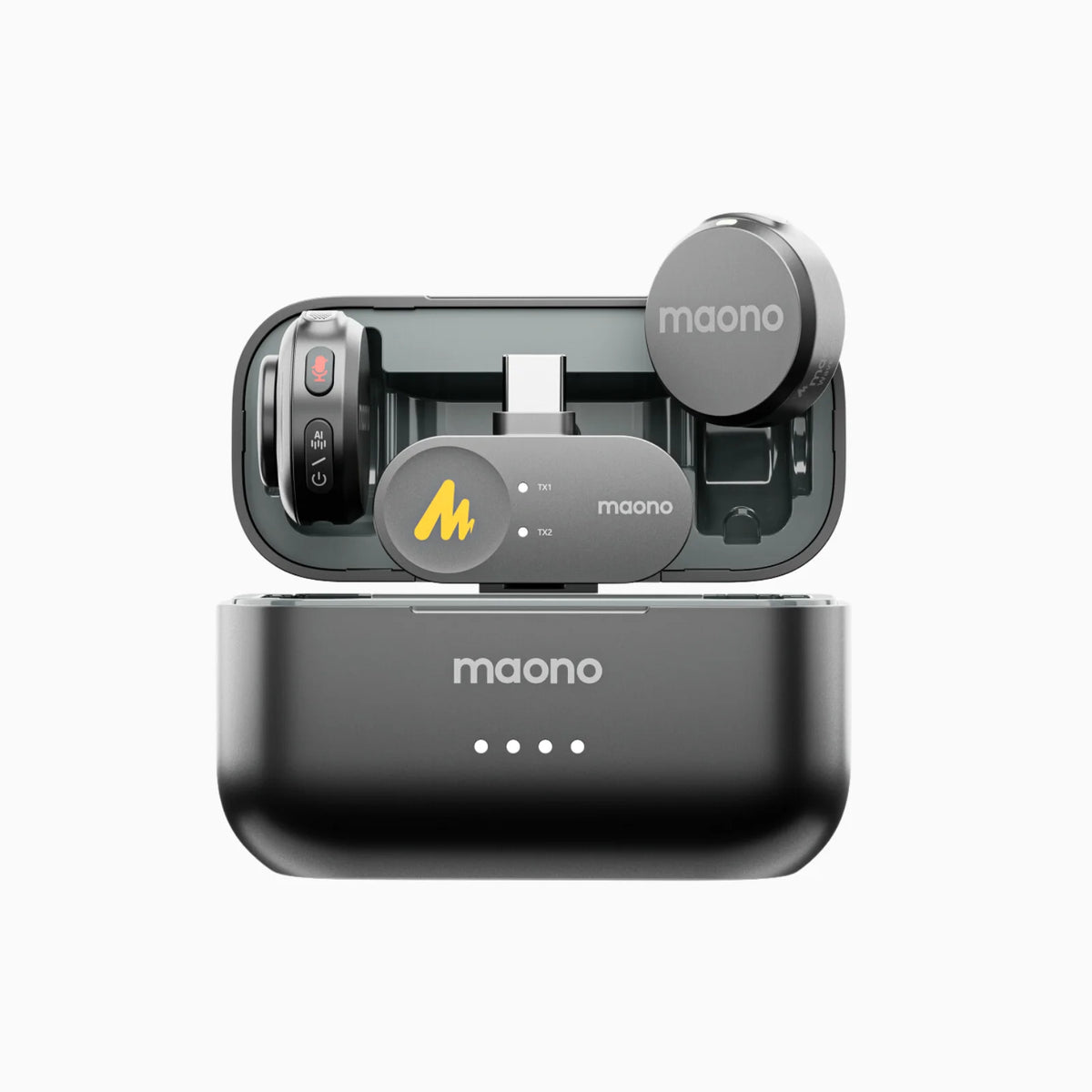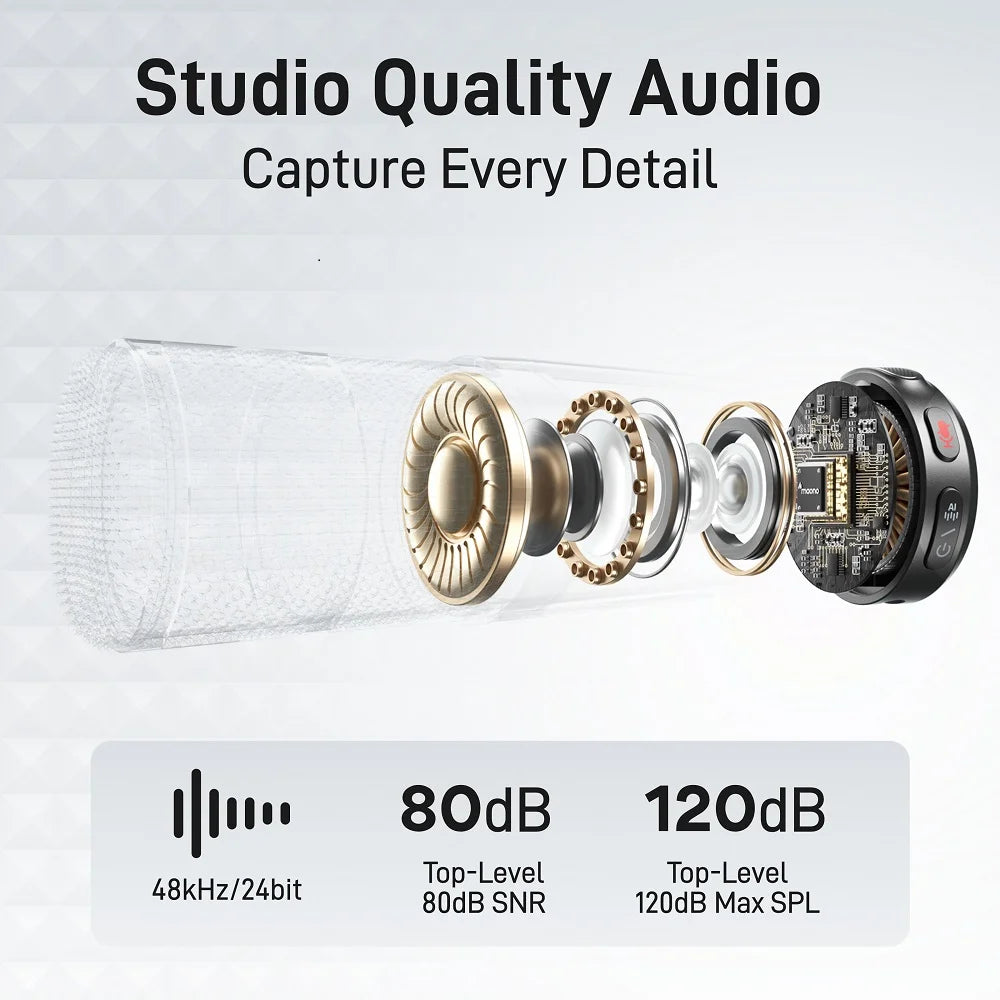A microphone stand, also known as a mic stand or boom arm, is an essential piece of equipment for anyone involved in recording audio, from podcasters and streamers to musicians and broadcasters. Its primary purpose is to hold the microphone in a stable and adjustable position, allowing for hands-free use and optimal audio capture. By positioning the mic at the correct height and angle, it ensures clear, consistent sound and helps reduce handling noise and distractions.
Imagine capturing crystal-clear audio with ease, every time you hit record. The secret to achieving this level of audio precision lies not just in your microphone, but in the equipment that supports it. A high-quality mic stand, such as a well-designed mic boom arm, can transform your recording setup by providing optimal positioning and stability. Whether you're a podcaster, streamer, or musician, the right mic stand ensures that your microphone is always in the perfect spot to capture the best sound. In this article, we’ll explore top mic stands or boom arms that offer superior maneuverability, space-saving options, and practical tips to enhance your recording experience.
Similarities and Differences Between Boom Arms and Mic Stands
Similarities:
- Purpose: Both boom arms and mic stands are designed to hold microphones in a stable and adjustable position, facilitating hands-free use and optimal audio capture.
- Adjustability: Both types of equipment offer some degree of adjustability. They can be positioned at various heights and angles to accommodate different recording needs.
- Support: Both are essential for professional audio recording setups, ensuring that microphones remain stable and correctly oriented during use.
Differences:
- Design and Structure:
- Mic Stands: Typically consist of a tripod base with a vertical pole. The microphone is attached to the top of the pole, which can be adjusted up or down. Mic stands usually have a fixed position with limited range of motion.
- Boom Arms: Feature an extendable arm or "boom" that allows the microphone to be positioned at various angles and distances from the base. Boom arms can be mounted to a desk or wall and offer more flexibility in positioning.
- Maneuverability:
- Mic Stands: Limited maneuverability compared to boom arms. They generally only adjust in height and may have some horizontal adjustment but are less versatile in positioning.
- Boom Arms: Provide extensive maneuverability. They can extend, retract, and swivel, allowing for precise positioning and adjustment of the microphone. This makes them ideal for dynamic recording environments.
- Space Requirements:
- Mic Stands: Require floor space for the tripod base, which can be cumbersome in smaller or cluttered recording spaces.
- Boom Arms: Can be mounted to a desk or wall, saving floor space and offering a cleaner, more flexible setup. They are particularly useful in tight spaces where a traditional mic stand would be impractical.
- Stability:
- Mic Stands: Typically offer more stability due to their broad base, making them suitable for situations where minimal movement is required.
- Boom Arms: Stability can vary depending on the build quality and mounting method. While high-quality boom arms are stable, cheaper models may struggle with balance, especially when fully extended.
- Installation:
- Mic Stands: Generally require minimal setup and can be placed anywhere on the floor. They are straightforward and easy to use.
- Boom Arms: Often require mounting to a desk or wall, which may involve more setup. They may also include additional components such as clamps or brackets.
While both boom arms and mic stands serve the essential function of supporting a microphone, boom arms offer greater flexibility and space-saving options compared to traditional mic stands. Choosing between them depends on your specific recording needs, available space, and desired level of maneuverability.
What mic arms have the most maneuverability and can hold the most weight?
When choosing a mic arm, maneuverability, and weight capacity are crucial factors to consider, especially for professional setups where stability and flexibility are paramount. Here are some top-rated mic arms known for their excellent maneuverability and robust weight support:
Top 5 Mic Arms for Maneuverability and Weight Capacity

- Features: The Maono BA37 is known for its solid construction and smooth articulation. It offers impressive maneuverability with a full range of motion and supports a considerable amount of weight, making it suitable for a variety of microphones.
- Benefits: Its adjustable spring-loaded arms allow for easy positioning and stability. It’s ideal for those who need a reliable and flexible mic stand for studio or podcasting setups. Also, it's the best budget mic boom arm from Maono.
-
Maono BA92

- Features: The Maono BA92 is a heavy-duty mic arm designed for maximum flexibility and strength. It's a microphone suspension boom arm stand which features an extended reach and high weight capacity, accommodating larger and heavier microphones.
- Benefits: This mic suspension arm's robust build ensures stability even with extended reach, and its dual-arm design allows for precise mic positioning. It’s a great choice for professional environments requiring durability and adaptability. This boom arm for a heavy mic and can carry up to 4.4 pounds of microphone.
-
Heil PR-40
- Features: The Heil PR-40 mic arm is renowned for its exceptional build quality and stability. It supports heavy microphones with ease and offers smooth, adjustable positioning.
- Benefits: Its heavy-duty construction ensures reliable support, and the arm’s articulating joints provide precise maneuverability. It’s ideal for those who need a dependable stand for the high-end microphone.
-
Rode PSA1
- Features: The Rode PSA1 is a popular choice for its smooth operation and sturdy design. It offers excellent maneuverability and supports a wide range of microphone weights.
- Benefits: Its dual-arm design and high-quality springs allow for easy adjustment and stability. It’s well-suited for both home studios and professional setups.
-
Blue Compass
- Features: The Blue Compass combines sleek design with heavy-duty performance. It features an internal spring system that provides smooth movement and a high weight capacity.
- Benefits: Its sleek, professional appearance complements any studio setup, and its robust construction ensures reliable support. It’s ideal for users who need both style and functionality.
Any mic stand suggestions for a desk with no space to clamp a boom arm?
If your desk lacks the space to accommodate a traditional clamp-on boom arm, consider these alternatives:
- Desk-Mounted Mic Stands: These stands attach directly to the edge of your desk without requiring clamping space. They typically feature a small base that sits on the desk surface and a vertical pole that extends upward to hold the microphone.
- Floor Stands: Floor stands or tripod stands can be placed on the floor and adjusted to the desired height. This option is ideal for setups where desk space is limited but floor space is available.
- Overhead Mic Mounts: An overhead mic mount can be installed on a wall or ceiling, providing a way to position your microphone without using desk space. This option is useful for recording environments where desk space is at a premium.
What is the best scissor mic arm?
The Heil PR-40 is widely regarded as one of the best scissor mic arms. Its robust construction and smooth operation make it a top choice for professional use. The scissor design provides excellent flexibility, allowing users to adjust the mic position with precision and ease. Its high weight capacity ensures it can handle a variety of microphones, making it a versatile option for different recording needs.
How To Detach a Mic Stand Tripod Base?
Detaching a mic stand tripod base involves a few simple steps:
1. Locate the Base Connection:
Most tripod bases connect to the mic stand via a screw or quick-release mechanism. Identify the attachment point where the stand meets the base.
2. Unscrew or Release
If the base is attached with screws, use the appropriate tool (usually an Allen wrench or screwdriver) to loosen and remove them. For quick-release mechanisms, simply engage the release lever or button to detach the base.
3. Remove the Base
Gently lift or pull the base away from the stand. Be cautious to ensure no components are damaged during the process.
4. Reassemble or Store
Once detached, you can either replace the base with a different one or store it for future use.
Where to Find Quality Mic Stands?
Quality mic stands can be found through various sources:
- Specialized Music Stores: Stores like Guitar Center or Sweetwater offer a wide range of mic stands and boom arms with knowledgeable staff to assist with your selection.
- Online Retailers: Websites like Amazon, B&H Photo, and Thomann provide extensive options and customer reviews, making it easier to compare products and find the best mic stand for your needs.
- Manufacturer Websites: Purchasing directly from the manufacturer’s website, such as Rode, Heil, or Maono, ensures you get genuine products and may provide access to exclusive bundles or deals.
FAQs
1. Are there any accessories that enhance the functionality of Maono mic boom arms?
Yes, several accessories can enhance the functionality of Maono mic boom arms, including:
- Pop Filters: These reduce plosive sounds and improve vocal clarity.
- Shock Mounts: They minimize vibrations and handling noise.
- Cable Management Clips: These keep cables organized and out of the way.
2. How do I troubleshoot issues like sagging or instability with my Maono mic boom arm?
If you experience sagging or instability with your Maono mic boom arm, try the following solutions:
- Check Tension Springs: Adjust the tension springs if the arm is sagging. Most boom arms have adjustment screws for this purpose.
- Ensure Proper Mounting: Confirm that the arm is securely mounted to the desk or stand. Tighten any loose connections.
- Verify Weight Capacity: Ensure that the microphone and any accessories do not exceed the arm’s weight capacity.
3. What do users say about the build quality and durability of Maono mic boom arms?
Users generally praise Maono mic boom arms for their solid build quality and durability. Many appreciate the robust construction and smooth operation, noting that the arms hold up well under regular use. Positive reviews often highlight their value for money, making them a popular choice among hobbyists and professionals alike.
Conclusion
Choosing the most suitable mic boom arm or the mic stand is essential for achieving optimal recording results and ensuring a smooth podcasting or streaming experience. By considering factors like maneuverability, weight capacity, and space constraints, you can select a mic stand that fits your needs. Whether you opt for a highly flexible scissor mic arm or a space-saving desk-mounted stand, the right equipment can make a significant difference in your setup. Remember to explore various options, utilize accessories to enhance functionality, and consult user reviews to make an informed decision. With the right mic boom arm, you’ll be well-equipped to capture high-quality audio and enjoy a more professional recording experience.




